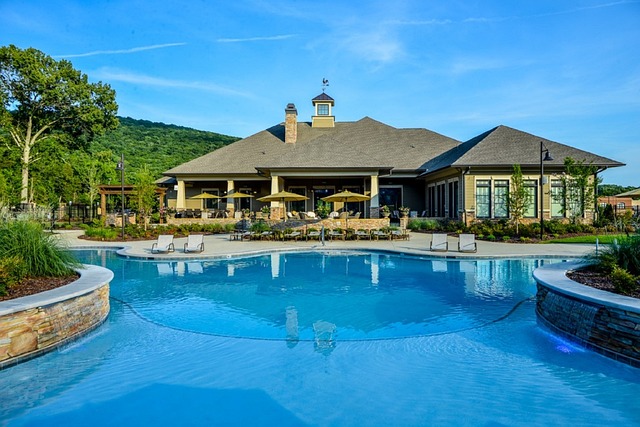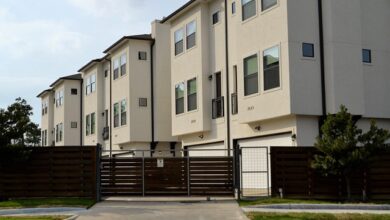How to Get Homeowners Insurance for a Shared Ownership Property in the UK

Shared ownership is an increasingly popular option for first-time buyers and those looking to step onto the property ladder in the UK. This scheme allows you to purchase a share of a property (typically between 25% and 75%) while paying rent on the remaining share, which is usually owned by a housing association. However, one of the challenges of shared ownership is navigating the complexities of homeowners insurance. In this article, we’ll explore everything you need to know about getting homeowners insurance for a shared ownership property in the UK.
What Is Shared Ownership?
Before diving into insurance specifics, it’s important to understand how shared ownership works. In a shared ownership arrangement:
- You own a percentage of the property (e.g., 50%) and pay a mortgage on that portion.
- You pay rent to the housing association or landlord for the share you don’t own.
- Over time, you may have the option to “staircase” (buy additional shares) until you eventually own 100% of the property.
While shared ownership makes homeownership more accessible, it also introduces unique considerations when it comes to insurance.
Why Do You Need Homeowners Insurance for a Shared Ownership Property?
Even though you only own part of the property, you are still responsible for insuring your share. The housing association typically covers the structural elements of the building (like walls and roofs), but as the homeowner, you are responsible for:
- Contents Insurance : Protecting your personal belongings inside the property.
- Buildings Insurance (if applicable) : Depending on the terms of your shared ownership agreement, you may need to insure the internal fixtures and fittings of your home.
- Liability Coverage : Covering accidental damage or injuries that occur within your property.
Without proper insurance, you could face significant financial losses in the event of theft, fire, flooding, or other disasters.
Types of Insurance for Shared Ownership Properties
When arranging insurance for a shared ownership property, there are two main types to consider:
1. Contents Insurance
This type of insurance covers your personal belongings, including furniture, electronics, clothing, and other valuables. Even if you’re renting part of the property, contents insurance is essential because the housing association’s policy won’t cover your possessions.
What Does Contents Insurance Typically Cover?
- Theft or vandalism
- Fire, smoke, or explosion damage
- Water damage (e.g., burst pipes)
- Accidental damage (optional add-on)
2. Buildings Insurance
In most shared ownership agreements, the housing association will arrange buildings insurance to cover the structure of the property (walls, roof, foundations, etc.). However, you may still need to insure the internal fixtures and fittings of your home, such as:
- Kitchen units and appliances
- Bathroom suites
- Internal doors and flooring
- Built-in wardrobes
Check your lease agreement carefully to determine whether you need to arrange additional buildings insurance for these items.
Steps to Get Homeowners Insurance for a Shared Ownership Property
Step 1: Review Your Lease Agreement
The first step is to thoroughly review your shared ownership lease agreement. This document will outline:
- Who is responsible for insuring different parts of the property.
- Any specific insurance requirements imposed by the housing association.
- Whether the housing association provides any coverage (e.g., buildings insurance).
If anything is unclear, contact the housing association or your solicitor for clarification.
Step 2: Assess Your Insurance Needs
Determine what aspects of the property you need to insure. For example:
- If the housing association already provides buildings insurance, focus on obtaining contents insurance.
- If you’re responsible for internal fixtures and fittings, ensure your policy includes adequate coverage for these items.
Make a list of all valuable possessions you want to insure, along with their estimated replacement costs.
Step 3: Compare Insurance Providers
Once you know what you need to insure, shop around for the best deal. Here are some tips for comparing insurance providers:
- Use Comparison Websites : Websites like Compare the Market, MoneySuperMarket, and Confused.com allow you to compare quotes from multiple insurers.
- Check Policy Details : Don’t just focus on price—ensure the policy covers everything you need.
- Look for Discounts : Some insurers offer discounts for bundling contents and buildings insurance or for installing security features like alarms or locks.
Step 4: Consider Specialist Shared Ownership Insurance
Some insurers offer policies specifically designed for shared ownership properties. These policies can simplify the process by covering both contents and internal fixtures under one plan. Examples of specialist providers include:
- Legal & General
- Aviva
- Zurich
These policies often come with tailored coverage options that align with the unique requirements of shared ownership leases.
Step 5: Notify the Housing Association
Once you’ve arranged your insurance, inform the housing association. They may require proof of coverage as part of your lease obligations. Keeping them in the loop ensures compliance with the terms of your agreement.
Tips for Saving Money on Homeowners Insurance
Insurance premiums can add up, especially if you’re already managing a mortgage and rent payments. Here are some ways to reduce costs:
- Increase Your Excess : Opt for a higher voluntary excess (the amount you pay toward a claim) to lower your premium.
- Install Security Measures : Adding burglar alarms, smoke detectors, or CCTV cameras can qualify you for discounts.
- Bundle Policies : If you have other insurance needs (e.g., car insurance), bundling them with the same provider can save money.
- Review Annually : Shop around each year to ensure you’re getting the best deal, as prices can vary significantly between providers.
Common Mistakes to Avoid
- Assuming the Housing Association Covers Everything : Many people mistakenly believe the housing association’s insurance covers all aspects of the property. Always double-check your responsibilities.
- Underinsuring Your Contents : Failing to accurately estimate the value of your belongings can leave you underinsured in the event of a claim.
- Ignoring Lease Requirements : Not adhering to the insurance requirements in your lease agreement could result in penalties or voided coverage.



